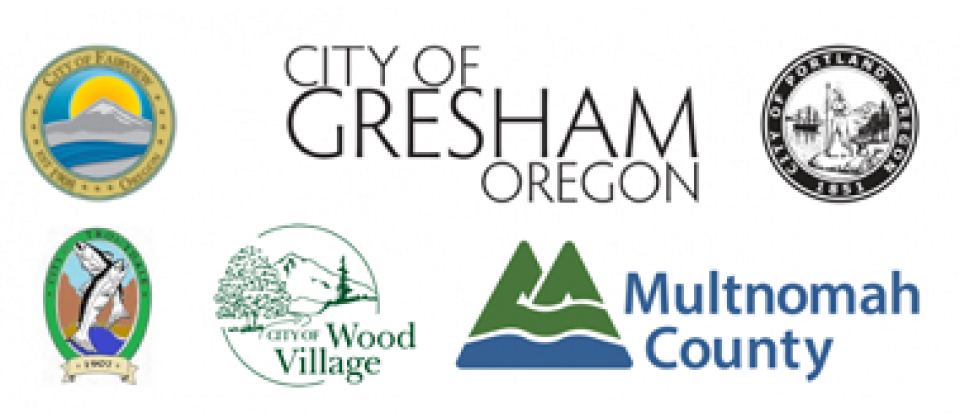
Fast, affordable Internet access for all.

As Mayors must concern themselves with everything from public safety and health to the development of the local economy and the provision of essential municipal services, they tend to have a particular focus on the infrastructure necessary to support it all, amid a cacophony of competing interests.
Over the summer, having reached consensus on the fundamental importance of “the digital infrastructure of tomorrow,” a particular focus of the United States Conference of Mayors 88th National Annual Meeting was to issue a resolution declaring the necessity of “Preserving Local Public Rights-of-Way and Regulatory Authority to Most Effectively Deploy 5G Broadband Access and Bridge the Digital Divide during the COVID-19 Pandemic.”

The Mayors’ resolution comes in response to the Federal Communications Commission’s (FCC's) 2018 preemption of local governments’ authority to regulate 5G infrastructure in their cities.
At the heart of the regulatory debate: local governments’ ability to determine the amount of fees to charge mobile carriers that want to place 5G equipment in Rights-of-Way. In addition to putting limits on those fees, the FCC Order also sets strict timelines by which cities and towns must respond to carrier applications. The FCC decision, issued over the objections of industry observers and policy experts, essentially eliminates local communities’ ability to negotiate in order to protect their own Rights-of-Way and the poles, traffic lights, and other potential structures within those Rights-of-Way.
Preempting Local Authority
News stories highlighting the breadth and depth of the digital divide and its impacts in the midst of the Covid-19 pandemic have dominated the headlines in recent months, but a new report emphasizes the degree to which dozens of communities in one Canadian province have struggled with connectivity issues for years. The recently released Nunavut Infrastructure Gap Report [pdf] shows what broadband access looks like for the 35,000 or so mostly Inuit residents of the nation’s youngest province, and what solutions exist for closing the gap for tens of thousands who struggle to get online.
Nunavut is the northernmost of Canada’s provinces, made up of two interlocking geographies: the landmass immediately north of Manitoba and east of the Northwest Territories, and the large collection of islands curled around Baffin Bay to the west of Greenland. It has a population barely 1/20th the size of Wyoming (the U.S.’s smallest by population) despite being the second-largest political subdivision by area in North America, and a population density of just 0.05 persons/square mile.

A Host of Infrastructure Gaps
Over the summer, Chicago Mayor Lori Lightfoot announced a new program to bring high-speed Internet service to the alarming number of households who do not have reliable access within the nation’s third-largest school district.
The initiative, referred to as Chicago Connected, aims to provide free high-speed Internet service to approximately 100,000 Chicago Public Schools (CPS) students. One of the ground-breaking features of the effort is that it includes funds to enlist the support of a number of Community Based Organizations to assist with enrollment in the program, digital literacy and skills development training.
At the end of September, during a virtual town hall meeting, Mayor Lightfoot said that while CPS was making progress connecting eligible families, they had not yet reached the goal.
“We’re not where we want it to be. And I think part of the difficulty is, even though it’s free, it’s about making sure that families feel safe in signing up,” Lightfoot said. “Currently, we have over 25,000 households that are signed up, and that is the equivalent of almost 38,000 students towards our goal of 60,000 households at 100,000 students.”
How It Works
Using a sponsored service model, Chicago Connected seeks to provide the high-speed connection for up to four years by directly paying for the service for eligible families. The program primarily relies on donations from philanthropic partners, CPS and city funds, with an additional $5 million from the CARES Act to fund the $50 million program. Donations, which includes a $750,000 commitment from former President Barack Obama and First Lady Michelle Obama, will cover the first two years, with CPS paying for the third and fourth years.
At the end of August, Alabama rolled out what has been a unique state-level response to the ongoing Covid-19 pandemic and a decision by every school district to offer remote learning as an option for the current school year. Using $103 million in CARES Act funding, the governor’s office enacted the Broadband Connectivity for Students initiative to help low-income families pay for existing or connect new service via a voucher program that runs through December 31st of this year and is worth, on average, about $400 per family.
To date almost 60,000 vouchers have been redeemed representing more than 100,000 students, and while we would wish to see such a large pot of funds go instead towards permanent connectivity solutions, for thousands of families it’s meant immediate and necessary relief. It also highlights the ongoing importance of fast, reliable, affordable Internet-access for distance learning.
The process began in late July, with the state issuing a Request for Proposals (RFP) [pdf] soliciting responses as many Internet Service Providers (ISPs) as wanted to participate in the program. The Alabama Department of Economic and Community Affairs is heading it up, with the state's Department of Education providing the identifying information for households with students on free or reduced lunch. CTC Technology and Energy is serving as contractor (and receiving approximately $3.4 million for its design work and services).
37 Internet Service Providers (ISPs) across fiber, fixed wireless, mobile, cable, and satellite service ultimately made the cut to participate in the program. See the full list of ISPs, but it includes a handful of municipal networks and cooperatives we’ve covered in the past, including:
Along the banks of the Columbia River, Multnomah County (pop. 813,000), Oregon is considering a publicly owned Fiber-to-the-Home (FTTH) network after being handed a study more than a year in the making. The report estimates that a countywide network reaching every home, business, and farm in a five-city area would cost just shy of $970 million, and bring with it a wealth of savings and other benefits to the community it serves.
Origins
The study has its origins in a 2017 push initiated by an advocacy group called Municipal Broadband PDX which has sought more affordable and equitable Internet access in the region. In 2018, the County Board of Commissioners agreed that it should be explored and approved the funding of a study, with the city of Portland and Multnomah County each contributing $100,000 and the remaining towns of Fairview, Gresham, Troutdale, and Wood Village joining the effort to collectively contribute an additional $50,000 for funding. Over the next year, CTC Technology and Energy conducted a comprehensive survey, analysis, and evaluation, and the results were delivered at the end of September.

More than a year and a half of planning and negotiation will culminate in fiber infrastructure laid to every household in one Tennessee county over the next few years. West Kentucky & Tennessee Telecommunications Cooperative (WK&T), using its own funds along with money from the Henry County Commission and the state of Tennessee, will extend its existing network to cover the entire county and give residents access to its broadband network and services.
Expanding Their Commitment

The recent news serves to expand a partnership that was originally announced in the spring of 2019. At that time, WK&T (founded 1951) pledged $2 million in investment and was awarded $2 million in matching funds from the second round of the state’s Broadband Accessibility Grant Program to reach 912 unserved homes in Henry County.
Local officials have decided to aim higher, however, with the county commission joining the effort to commit $3 million of its own funds to reach as many as 1,400 homes in what County Mayor Brent Greer explained in an interview is the first phase of a countywide build that will take shape over the next 24-26 months. The cost of the first phase will be approximately $8 million, with $3 million coming from the county commission, $3 million from WK&T, and $2 million from the state. By the time it’s through, though, the project will total $20 million and bring WK&T infrastructure to every home, business, and farm.
Seattle, Washington sits at the technology epicenter of the Pacific Northwest, and its residents have historically enjoyed better wireline Internet access options than many Americans across the country. A new report, Seattle Internet for All [pdf], provides a wealth of analysis which identifies those remaining in the city who struggle to get online. And while it outlines a detailed set of steps the city can do to reach the 5% or so of residents who report not having any subscription, most of them remain small, with no bold strategies offered to solve the connectivity gap once and for all.
The report comes as a result of the Internet for All Resolution passed by the city council in July in order to address digital divide amplified by the ongoing pandemic. While the city has been successful in increasing Internet access over the last five years, there are important income- and race-based gaps that still need to be fixed. Currently, the report says, 17,575 households with 37,365 residents sit on the other side of the adoption gap, and it concludes that the majority of the disparity is driven by affordability and a lack of digital skills.
Summary of Findings
The report argues that Seattle remains one of the most connected cities in the country, with 93% of the city having access to gigabit broadband from one or more Internet Service Providers (ISPs); according to the FCC Form 477 data (which itself overstates competition) that number sits at 75%, but in either case it's worth noting that for Comcast and Wave subscribers this will be asymmetric gigabit with far slower upload speeds.

This week on the podcast Christopher welcomes back Will Aycock, General Manager of Wilson, North Carolina’s municipal network Greenlight, and Rebecca Agner, Communications and Marketing Director for the city of Wilson.
Christopher talks with the duo about what it took for the city to be named one of the ten best small towns in the country to start a business in 2019, and the city’s efforts to use its municipal infrastructure to launch an affordable new ridesharing initiative which takes into account social distancing needs and user cost during the COVID-19 pandemic.
They also spend time discussing how Greenlight is spearheading efforts to make sure the county’s most economically vulnerable residents have options to connect in 2020, including a public housing initiative that makes sure low-income residents have an affordable, reliable connection and a flexpay program that gives residents the option to pay for small chunks of Internet access according to their means and needs.
Finally, the group dives into the network’s future plans as it approaches paying off the last of its debt in the near future.
This show is 31 minutes long and can be played on this page or via Apple Podcasts or the tool of your choice using this feed.
Transcript below.
We want your feedback and suggestions for the show-please e-mail us or leave a comment below.
Listen to other episodes here or view all episodes in our index. See other podcasts from the Institute for Local Self-Reliance here.
Thanks to Arne Huseby for the music. The song is Warm Duck Shuffle and is licensed under a Creative Commons Attribution (3.0) license.
Over the summer, Oregon took a second swing at revising its state Universal Service Fund program by passing SB 1603, a bill which will create a larger rural broadband development fund by including retail wireless and VoIP service (in addition to traditional telephone service) in the fees it collects to bring basic connectivity services to unconnected parts of the state. The new law lowers the current tax rate on telecommunications service provider's gross revenue (from 8.5% to 6%) but dramatically broadens the collection base, which will bring in needed dollars to expand broadband access to state residents without it in coming years. The move comes on the heels of the state’s move to establish a Broadband Office in 2018 to “to promote access to broadband services for all Oregonians in order to improve the economy and quality of life.”
Nuts and Bolts
SB 1603, which passed the state legislature on June 26 and was signed into law on July 7, directs the Oregon Business Development Department (OBDD) to transfer up to $5 million of the funds collected each year to a broadband fund for rural development projects, administered by the OBDD. While the amount that will be collected remains unknown at the moment, it will no doubt represent a significant boost: the current mechanism for funding rural information infrastructure projects — the Rural Broadband Capacity Pilot Program — received 25 applications for almost $5 million in requested funding, but was only able to grant $500,000, or 10%. SB 1603 caps the money to be collected by the Oregon Universal Service Fund at $28 million annually.
As a result of SB1603, Oregonians can expect the average cell phone bill would go up by about $4 a year, and those with landline telephone service will see an annual decrease of $12 a year. Some VoIP providers had contributed willingly prior to the bill — that voluntary opt-in is removed.
In the city of Fullerton, California (pop. 140,000), privately owned infrastructure builder and operator SiFi Networks has turned on the first section of what will be a city-wide, open access Fiber-to-the-Home network. The project makes Fullerton SiFi’s first FiberCity — a privately built, financed, and operated open access network it plans to duplicate in more cities across the country in the future. When complete next fall, the Fullerton FiberCity network will pass every home and business in the city, with the company's subsidiary, SiFi Networks Operations, selling wholesaling capacity to as many Internet Service Providers (ISPs) as want to enter the market.
A Different Approach

SiFi’s FiberCity model remains somewhat unique in the United States, and is much more common in Europe and Asia. CEO Ben Bawtree-Johnson attributes their success to cracking the economic code for private investment in open access information infrastructure, which has seen more attention in recent years as investors and fund managers have seen opportunities. “[O]ur vision really is to create as many last-mile fiber optic networks as we can across the USA in a long term sustainable fashion,” Bawtree-Jobson remarked on an episode of the podcast last fall. “[W]e're all about long term, dry, low yielding, risk mitigated investments, so everything we do is based around 30-year plus type investments.”